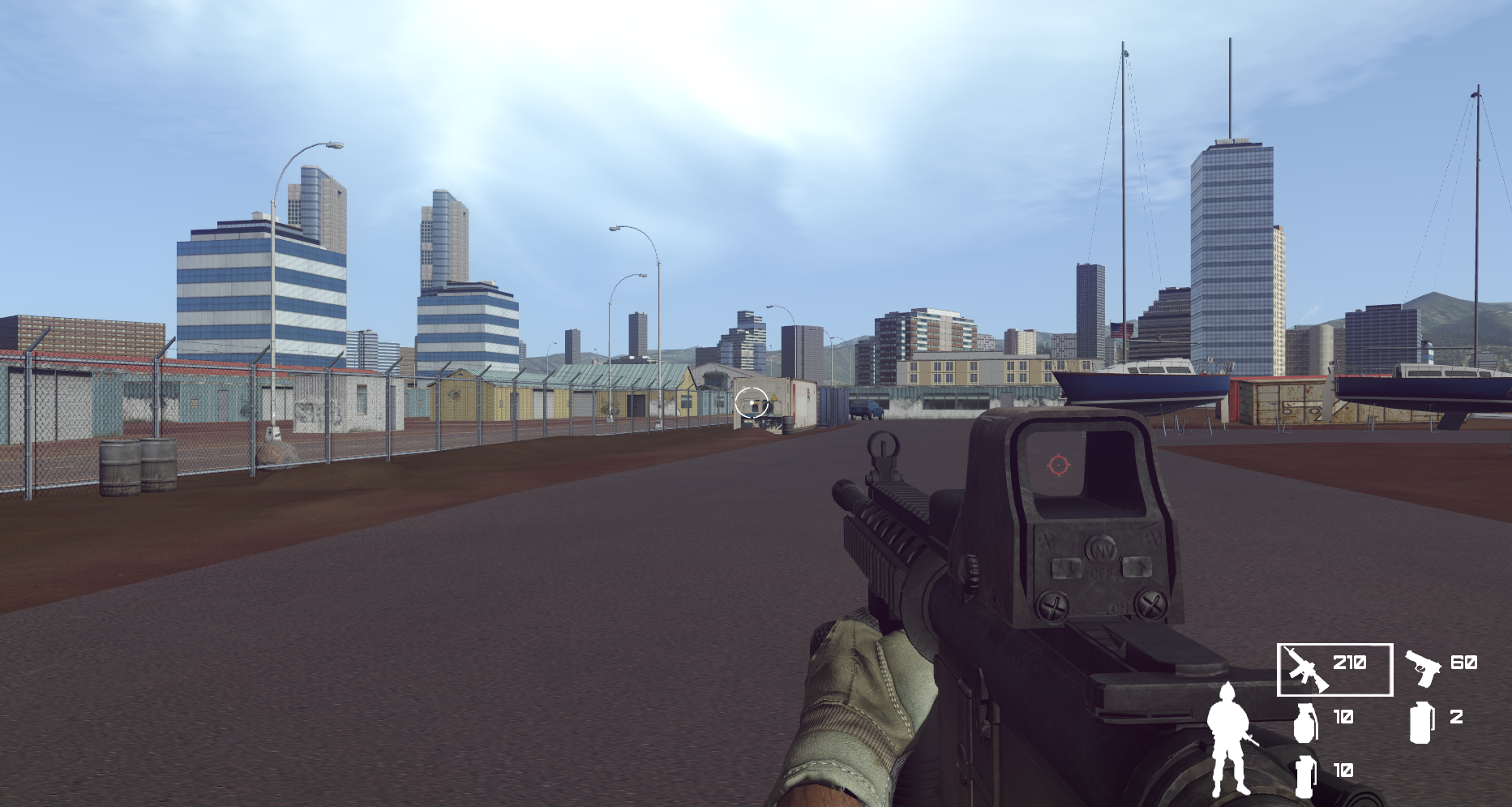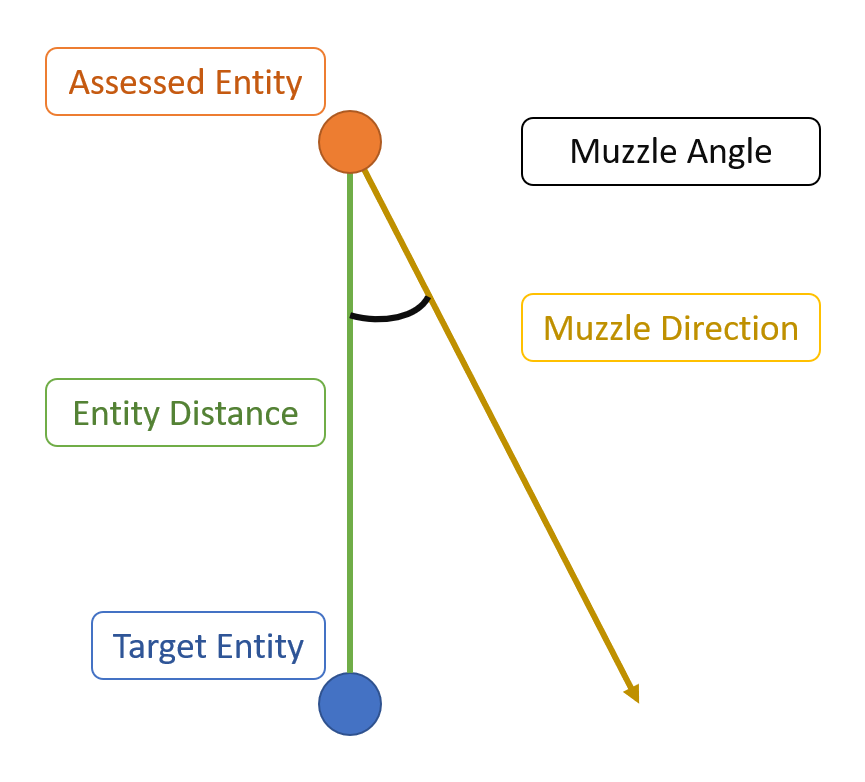Release Notes 2020-1¶
Full Release (April 2020)¶
New Features¶
Team tutoring¶
We have added the first phase at supporting team tutoring. In the current implementation of this GIFT release the GIFT architecture now calculates performance assessment and maintains learner state for an entire, author defined, team organization during real time assessment (DKF) in a GIFT course. This means that the performance assessment and learner state GIFT messages can now contain references to a team organization at the concept level. The team organization can be made up of playable team members (e.g. platoon sergeant) and other important objects that are important for assessment (e.g. vehicle, shop keeper). The GIFT architecture organizes all learners in the same session under a single GIFT learner called the host. It also maintains a mapping of which GIFT tutor user interface web page corresponds to each learner in order to deliver individualized feedback if necessary.
Team Authoring in the course creator¶
The real time assessment editor in the GIFT course creator now has a team focus in many areas. You can access this by editing a VBS course object.
The team organization panel is the best place to start when authoring team real time assessments. It can be accessed from the "Assessment Properties" tab.
You can define any structure for your team organization and include any sub-teams or non-playable but important objects. If you do add non-playable entries in the team organization you should mark those as not playable in the hierarchy so that learners can't select that role in the TUI role selection page when taking the course.
For battlefield visualization you may also want to select the appropriate team echelon if appropriate.
Once the team organization is defined, you will be able to access the structure across several panels. Here the screenshot shows selecting parts of the team organization that will be assessed on the "Vehicles Exit FOB" avoid location condition.
You can also select which parts of the team organization should receive specific feedback messages. This allows authors to deliver feedback to one or more individuals instead of to the entire group.
Another new feature is the ability to deliver instructions to learners when a task starts. This bypasses the learning effect chain of the GIFT architecture (i.e. no instructional strategies involved) to deliver domain specific information. Its intended purpose is not to deliver performance based feedback messages.
Teams in the Tutor User Interface (TUI)¶
A new lobby experience was added to the GIFT TUI to facilitate a multi-user gathering before a team real time assessment takes place.
The lobby first allows users to host or join a team session. Users will only be able to host a session if the Gateway module is available and configured correctly. Users will only be able to join a team session if there are available roles (i.e. roles that aren't already taken) and the team session exists on the same GIFT instance/network.
The host of a team session can kick joiners out if desired on the choose a role page.
Learners have to choose which role they will be playing in the real time assessment. This allows GIFT to pair the GIFT user to the assessments tagged with that role and to the entity the player will be controlling in the training environment.
Human observer tool (Game Master)¶
The Game Master provides the ability to monitor, manipulate and playback events that take place during a real time assessment of a GIFT course. This user interface will show performance assessment, game state and applied strategies/tactics during action and after action. There are two different entry points for using Game Master. The first is to attached to an active, ongoing session and conduct Adaptive Exercise Control. The second is to load and playback a previously captured session log to conduct an After Action Review (AAR).
Adaptive Exercise Control¶
In this experience the Game master will display information about a current active session in real time. The observer has the option of simply monitoring the learner(s) activities and engage in providing observed assessments, bookmarks/notes, sending feedback to learners, manually triggering scenario adaptations to be applied and over-ridding automated instructional strategy decisions made by GIFT.
The assessment panel of the game master is where all of the tasks defined in the real time assessment are displayed. Each task has a life-cycle of not-activated yet, currently activated and no longer activated. This panel gives the observer a quick overview of the state of each task and descendant concepts including current assessment values.
Yellow colored concepts are those that will not be automatically assessed by GIFT. They require a human observer to provide an assessment of the learner(s) performance when appropriate.
This image shows both the map panel (left hand side) and the edit concept panels (OPORD/WARNORD Brief concept). The map panel shows location based information to the observer as it is received from the training environment. The 2525D icons shown are reflective of the team echelons selected in the team organization authored in the real time assessment.
The edit concept panel shows the user interface for allowing an observer to set the assessment value, choose which team members are being assessed and a bookmark/note associated with the concept.
On this image the game master contains several assessed tasks/concepts (represented by 1 to 3 yellow stars), a observer provided bookmark (OPORD/WARNORD Brief concept shows Source:mhoffman and Explanation:briefing completed correctly), and three strategies that have been applied to the learners (under Strategy history header).
Shows the feedback string and other information related to the delivery of the feedback for the 'Vehicle 2 Speeding' strategy that was applied (seen under the* Strategy history* header). This panel allows observers to explore the types of instructional strategies that were automatically applied by GIFT.
The strategy presets panel displays all of the pre-authored strategies. It is also where any strategies that are added during the session by the observer exist. With this panel the observer can manually activate instructional strategies in GIFT.
After Action Review (AAR)¶
With this experience users can playback a GIFT real time assessment session. This can be used to help conduct an AAR. The user can also decide to send game state messages out to external training applications for battlefield visualization (e.g. Augmented Reality Sandtable (ARES), DIS consumers).
This shows an example of a past session playback experience. The new timeline panel at the bottom provides a temporal view of the tasks performance assessments that happened during the session. The user can manipulate the playhead on the timeline to play or pause specific time series.
Capture bookmark audio¶
The Game Master user can store bookmarks as text or audio for each concept in the real time assessment. The audio component allows observers who don't have the time and/or means to type in text to quickly provide comments by simply speaking. To use this feature you will need a microphone and to click in the bookmark text area on the concept panel you wish to associate the comments with during an active session in the Game Master.
VR Engage training application¶

GIFT is now integrated with VR Engage (version 1.5 IPB3) created by VT MAK. There is a VR Engage GIFT course object in the course creator that you can use to author real time assessments. Most of the same scenario adaptations that are available for VBS are also available for VR Engage (e.g. create actor, change weather). We developed a VR Forces (yes VR Forces) plugin to allow bidirectional communication between the GIFT Gateway module and the VR game engine.
For more information please read the following:COIN Chapter 1 course¶
A new course has been provided on GIFT Cloud called 'COIN (Chapter 1)'. This courses provides examples of using many adaptive course flow course objects to systematically teach a single course concept at a time while providing remediation along the way. It leverages Constructive (summarize a passage), Active (highlight a passage) and Passive (watch a YouTube video) activities.
Authored Branch¶
Authors can now define explicit paths they would like learners to go down based on mathmatical distributions. Each path can have zero or more course objects. Sub trees are also allowed to nesting.
The GIFT report generation will provide information about:- when and what paths were entered
- when and what paths were existed
- the duration in a particular path
Shows an authored branch course object with three paths. The first path is given to 60% of learners, the second 30% and the last 10%. GIFT keeps track of how many learners have gone down each path.
Muzzle Flagging real time assessment (DKF) condition¶
A new condition was created called Muzzle flagging. This condition can be used to determine when a team organization member is aiming their weapon at another team organization member. Authors can use this to assess when entities on the same side or opposing sides are facing each other.

Motivational Assessment Tool (MAT) surveys¶
GIFT now has two more validated surveys for authors to include in their courses. These come from the MAT work that was conducted by IST. The goal for the MAT is to capture an individual’s general motivation type and motivator preferences. GIFT converts the survey scores into learner state values which can be used to make decisions in the course.
Reinerman-Jones, L., Lameier, E., Biddle E., Boyce, M: Informing the Long-term learner model: motivating the adult learner (Phase 1). Technical Report(2017).
Also found in the Proceedings of the Sixth Annual GIFT Users Symposium https://gifttutoring.org/documents/137
Changes¶
Training application remediation¶
Training application course objects now have access to the iCAP pedagogical model through an optional feature to add remediation. When enabled, the course creator will allow authors to manage remediation material in a similar manner as can already be done with Adaptive courseflow course objects. This logic will leverage the same set of remediation material available in the course. The logic relies on course concepts being defined and that those course concepts exist in the real time assessment list of concepts.
Authors can also define the number of allowed attempts on the training application scenario and whether the scenario should be repeated or not after remediation is given. Remediation is only given when appropriate.
One use case for this is that you would like all learners to take this training application scenario but possibly allow testing out of parts of the course where Adaptive courseflow course objects are used.
New GIFT Published Course can be edited¶
In the past, when you created a published course the logic would make a copy of the source course. That copied version could not be edited in the course creator. Now, when you create a new published course a copy is not made and you have the option to edit the course after unlocking it.
Question text as column headers in generated reports¶
When generating reports with GIFT (publish course or ERT), survey question response columns will now show the question text if a tag is not specified. This is an improvement of the database id syntax that was shown in the past.
Structured review always shown in Adaptive courseflow¶
Previously the generated structured review TUI webpage was only shown when a learner failed a recall or practice phase. Now it is shown no matter pass or fail to give an opportunity for the learner to view the results and transition to the next activity.
Other course creator and real time assessment editor improvements¶
- better filtering of the types of overall scoring a condition supports
- easy to author mid lesson surveys, less clicks and hunting
- show images instead of file names when possible
- show embedded youtube video instead of youtube URL when possible
- new Entity health condition
misc.¶
Many other performance improvements and bug fixes are also included.